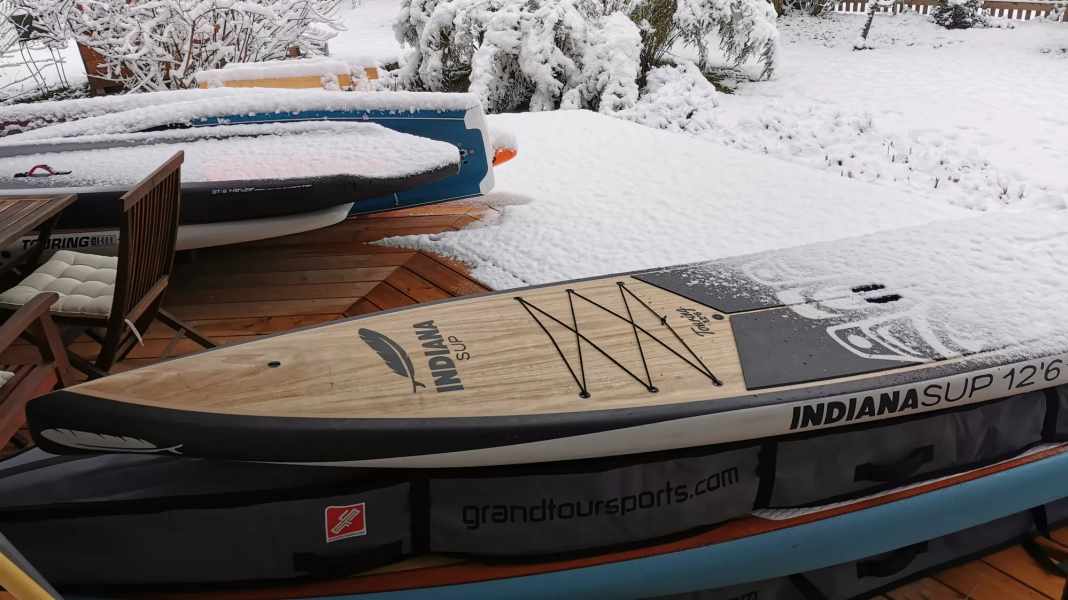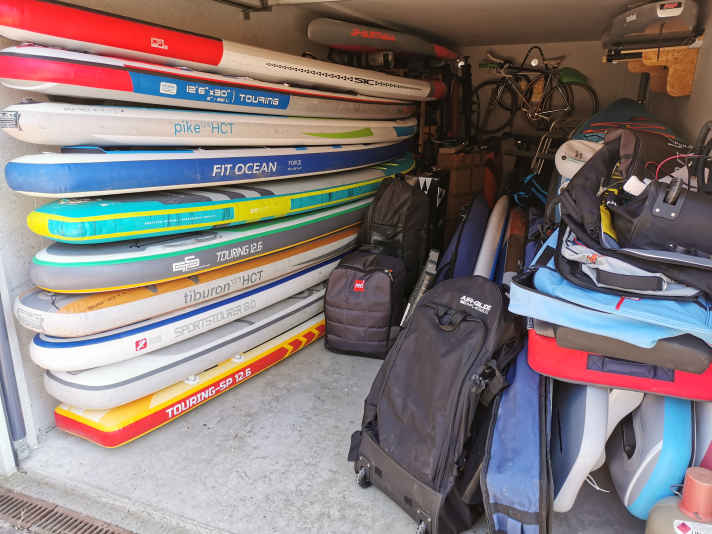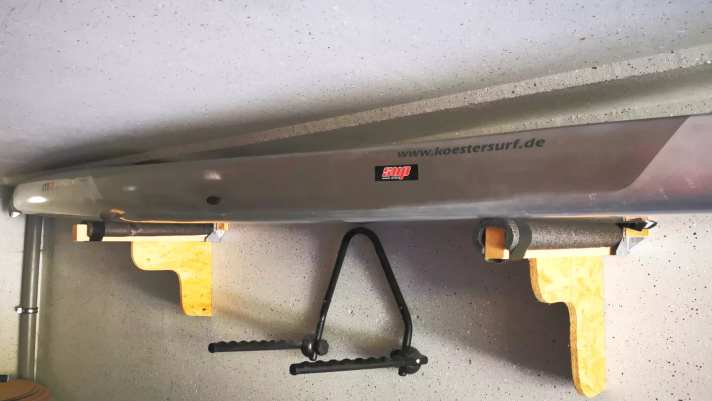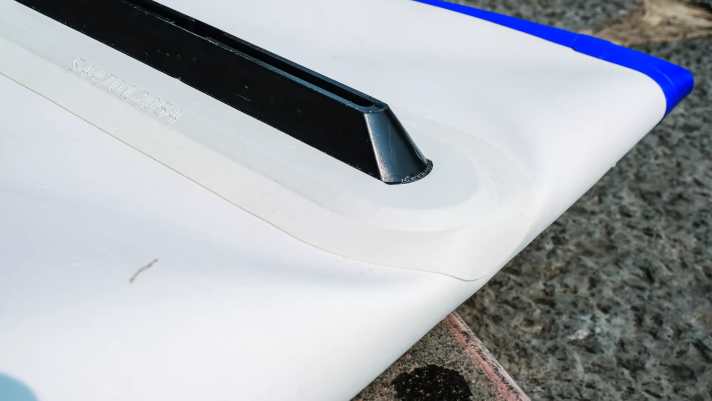

Ideally, of course, you should paddle through the winter, but even then the question of correct storage on the "unpaddleable" days arises. During SUP Magazine's winter test, the boards are stacked up in the snow for a few days and - the good news is - our boards are actually pretty robust and can withstand this. However, you can also treat your board to something good for longer (winter) storage.
In this article:
What is the best storage space for SUPs?
Basement, garage or bedroom? If the board is really dry, the storage location doesn't really matter. However, it should be dry and allow air to reach the board. A cool, dry cellar is just as suitable as a storage place in the bedroom under the bed.

Storing inflatable SUPs correctly
With inflatable SUPs, the first question is: should I store the board inflated or should I deflate it for storage?
In principle, both are possibleBut with a few tricks, you can store your SUP particularly comfortably.
- Clean and dry store. Inflatable SUPs are made of PVC - this is basically a super durable material, almost too durable from a sustainability point of view. Experience has shown that special "care products" are not required. Before storage, however, the "carpet" on the deck should be thoroughly cleaned, using a little warm water with perhaps a dash of washing-up liquid and a robust hand brush. The paddle board brand even includes such a brush with the board. This prevents verdigris and unpleasant odours caused by any organic residues on the board. With some of the recommended care products, you should bear in mind that everything you put on the board will end up in the water! Cleaning is particularly important after salt water use, as the salt residue will otherwise attract moisture again and again, and this also applies to SUP bags that have become wet with salt water. Then rot is inevitable. The weakest point on all SUPs is the gluing and seams. There are no reports of the PVC layer heralding the end of a board's life due to lack of care.
- Store inflated: This keeps the board crease-free and ideally stored, also minimising stress on the seams. Inflated with reduced pressure (approx. 5 to 8 psi) and stored lying on wide supports or on edge. To prevent the board from sagging, these should not be more than half the length of the board apart.
- Store rolled up. Not upright, but lying down so that it does not stand on the buckling surface (also when transporting by car). When the castor is upright, the total weight presses more or less on a small point.
- Protect against mice infestation. Sounds strange, but it's true. Mice love anything that looks like a "nest" and like to nibble on it. Even if "only" the pannier and carrying handles are affected, it's annoying. However, we have also had reports of PVC laminates being eaten through.
- When rolling in you should - as with daily use - make sure that there is no kink directly on the fin box (see photo). It is also advisable not to roll the board away for good at sub-zero temperatures, as the PVC is then quite stiff and is bent more than rolled. At 20 degrees, on the other hand, the board can be packed away nicely and smoothly for winter storage.

If you have space, store inflated and crease-free with 4 to 8 psi pressure in the board.
Storing your SUP correctly: Hardboards
For hardboards, there are often not many alternatives for storage due to the dimensions of usually over 3 metres in length and, in the case of touring boards, even up to over four metres in length. The following rules apply to storage in order of importance.
"Incorrect storage can result in total damage!"
Stephan Gölnitz, SUP magazine tester
- Store in a dry place! Hardboards should be stored as airily as possible, with the opportunity to "air dry". Under no circumstances should they be stored in a completely closed board bag. In a bag, there is a risk of "osmosis", i.e. damage to the paint layer in the form of bubbles, especially with very lightly constructed boards. These form in a closed, warm and humid environment. For example, in a board bag on the roof of a car after summer rain - within a short time!
- Support well! Ideally, a hardboard should rest on the sliding surface or on edge on two supports. These should be well padded, at least 5 centimetres wide and softly padded. Pipe insulation from the DIY store, for example, is quite suitable. A good distance between the supports is about 1.5 to two metres.
- Finn out. To prevent residual water from building up in the fin box, remove the fin and also check that there is no more water "standing" in the fin box or in the recessed grip.


